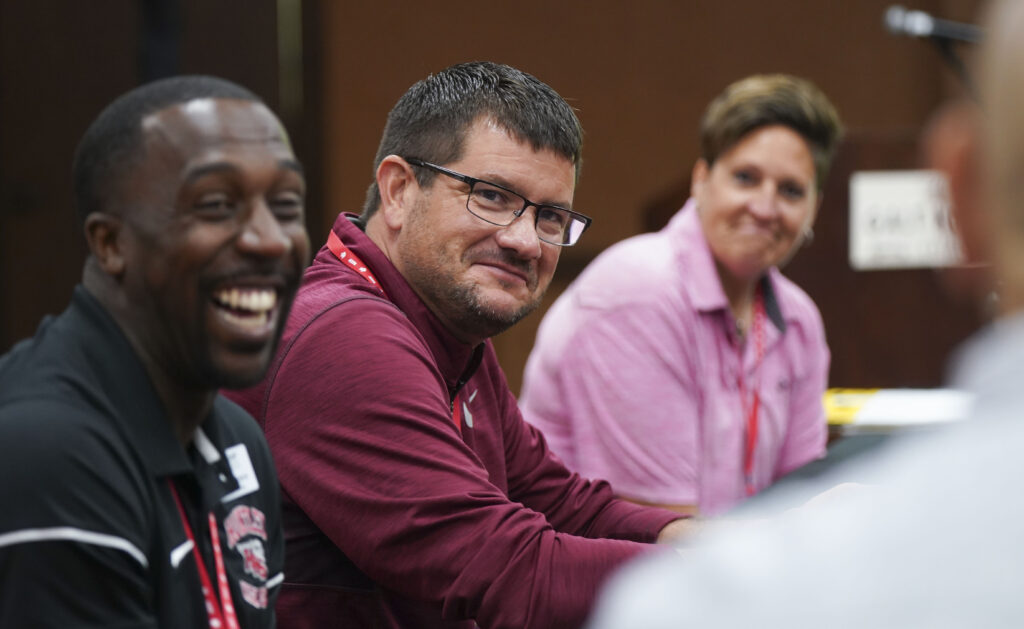September can be a scramble. In addition to a fresh cohort of students to look forward to, principals must often onboard brand-new teachers. Most arrive excited to get started but may lack the practical experience needed to handle the day-to-day realities of teaching in high school. Below, Greg Johnson, the principal of West Liberty-Salem High School in West Liberty, OH, and an NASSP board member, offers strategies for creating supportive environments where new teachers thrive—and students reap the benefits.
How many new teachers do you have?
This year I have three new teachers. One is a brand-new teacher just out of college and full of enthusiasm. I also have a veteran teacher who will be teaching Spanish. And we just hired a former graduate of our high school who has been teaching nearby for the last five years. I’m really excited about what our new teachers will contribute. We are a small school with about 90 to100 graduates each year, so I may not have the number of new teachers that other schools do. But the training we provide can easily be scalable to larger high schools since we work in small groups to help forge connections and build a cohesive community.
What kind of onboarding do you offer?
We have the typical training materials like a new employee handbook and a teacher handbook. But what I’ve found most effective over the years is to have everyone come together for a full week before school starts for staff development. Teaching can be extremely challenging, and I want to foster an environment where support is always available, whether it’s from me, other teachers and staff, mentors, or specific training materials.

What activities take place during staff development?
On the first day, I focus on building community and emphasizing how much we can count on each other. This year we each took Enneagram Personality Tests and met in small groups to explore the results. Unsurprisingly, we discovered that we have a lot more similarities than differences, especially compared to how diverse our student population is. Exploring all that we have in common was a great way for new teachers to see that they already fit into our school and culture.
We also got the entire staff together so new teachers could meet the people making their lunches, driving the school buses, taking care of the grounds, and handling all the administrative tasks. It’s empowering for new teachers to know who they can turn to for any kind of issue they may have. And it provides a starting point for future positive working relationships and friendships.
How do you address school safety?
One of the most important things I do during our staff development days is to spend a day on shooter response training. Unfortunately, in 2017, we had a shooting on campus, which is far too common these days. That’s why every year, I have all my new and existing teachers take the ALICE Training, which stands for Alert, Lockdown, Inform, Counter, and Evacuate. It’s not required every year, but having experienced on-campus gun violence, I don’t want anyone to miss a training because they weren’t there that day.
I also conduct safety drills where new teachers can pair up with an experienced teacher to practice opening egress windows, exit the building from inconvenient spaces, and create barricades and distractions. I hope they never have to experience anything like this, but if they do, I want them to be as prepared as they can be.
What is your favorite part about bringing new teachers into your school?
I love watching our community create a dynamic, welcoming environment for new teachers and themselves. Probably my favorite part of our staff development week is climbing into school vans and heading down the road to a farmers’ market where we relax and eat lunch together. We talk about where we were raised, friends we have in common, and why we got into education in the first place. Like I said, it’s really all about realizing that our similarities far outweigh our differences.
For more ideas on supporting new teachers, check out articles in Principal Leadership.
